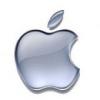-
Posts
10067 -
Joined
-
Last visited
-
Days Won
569
Content Type
Profiles
Articles, News and Tips
Forums
Everything posted by Hervé
-

E6410 with nVidia NVS 3100M graphics - Mountain Lion Guide
Hervé replied to v3ct0r's topic in The Archive
Which version of FakeSMC + HWMonitor do you run? The latest appears safe to use: 5.2.755. Make sure to edit the FakeSMC plist to reflect the correct Mac model (or closest) and chose the corresponding SMBIOS plist as detailed in the performance tuning article. -
SD card reader will never work in Mac OS X: it shares an IRQ with the 10/100 LAN port and Mac OS X does not support that. Even when you disable the LAN in BIOS, the SD card reader never works properly; you can insert a card and it gets detected, however it'll remain unreadable no matter what you do. Intel wireless cards are not supported at all in Mac OS X; make sure you only use those supported cards like the Dell DW1390 (a Broadcom-based model that works OOB in Mac OS X ). I don't know about Fingerprint support, never had a D4xx that had one. There's no PCMCIA support after 10.6.6. I did some extensive tests last year and noticed that you can get it to work in subsequent SL releases (at least with some cards - I tested it with an old 2xUSB 2.0 Cardbus adapter) to the detriment of network connectivity. It's either or, but they will no coincide. Hot plugging did not seem to be supported either. All the rest works (bluetooth, wireless, LAN, sleep & wake, audio, LCD brightness, trackpad, USB, etc.) Now you know what to expect
-
If you already have myHack installed on your machine, yes, you can simply add the missing kexts or replace your /Extra folder by the boot pack for your specific model. Then run myHack-myFix (full) to repair permissions and rebuild kext cache. On reboot, you should be Ok and good to install EDP and do a System Build. If you do not have myHack, what you can do is: copy the LAN kext to /System/Library/Extensions open up Terminal from Utilities folder and type: sudo chown -R 0:0 sudo chmod -R 755 touch /System/Library/Extensions Reboot and you should have LAN working.
-
You can extract your DSDT with Chameleon Wizard, if you do not already use one. You can also use DSDTEditor too (available off Olaria forum) or follow the process detailed by Dinesh in his DSDT/SSDT thread in Research section of the forum.
-
Sounds like your video problems come from lack of DSDT and use of distros (iFail, Kalyway, ...). Use our bootpack and myHack to create your USB installer for a full Vanilla installation, then follow up with EDP fine-tuning. Everything should be Ok then. Read-up the documentation provided in EDP pages of the web site. Re: wireless, which card do you have exactly? You can easily check that by opening the little door under the D420: you'll see the card, which will have the model on the sticker. There's a non-exhaustive list of supported/unsupported cards here: https://osxlatitude.com/index.php?/topic/2120-supportedunsupported-wireless-cards-inventory/?p=16194
-
It's the fact that you're using a distro (iFail) without a specific DSDT for your D830. Boot it with video output on an external screen (press Fn-F8 right at the very beginning) and I bet that display would revert to built-in LCD at switch to desktop. You should use our bootpack and proceed with a Vanilla Mac OS X installation with myHack, then follow with EDP tuning, i.e. the OSXL procedure. Look up for the documentation in our EDP pages on the web site. Please note that GM965 is the chipset that all D830 have. By default, this chipset includes GMA X3100 graphics which, I assume, is your case. Some D830 have discrete add-on nVidia graphics (NVS 135M/NVS 140M) instead, which are much better. When you use our bootpack, make sure to pick up the one with correct graphics chip + screen resolution that matches your LCD (the DSDT slightly differs) in the case of X3100 graphics.
-
Try and use the /Extra from your previous Lion installation as boot pack. I would not use the DSDT of a given computer on another one, unless it is really identical hardware wise; this is not entirely the case between D630 and Inspiron 1525.
-
When you say you have no NIC, I assume you're talking about the on-board 10/100Mb Ethernet port. You should use our bootpack as it contains the kext for the on-board LAN: check your /Extra/Extensions folder and it should contain something like BCM5722D.kext If it does not, that would explain your issue.
-

OSX Mountain Lion Install on D830 Sound Not Working
Hervé replied to bean8378's topic in The Archive
Sometimes, you have to go to the audio pref pane and manually select the analog output; then, let there be sound! -
Hi, what's in your /Extra folder? Did you try boot options such as npci=0x2000 or PciRoot=1 or -x ? This laptop runs on GMA X3100 graphics which is not supported by ML. As such, you have no native graphics support, except if you apply MLPF hack on that installation. You can have a look for details in the various guides I've published in the relevant section, especially those for D630 X3100 and D620 nVidia.
-
Hi, A few questions: which BIOS version is your D620 running? did you configure the BIOS as per recommended settings? do you have an Intel wireless card? If so, disabled it or take it out as it's unsupported and it'll need to be replaced what does the KP show?
-
I guess it depends on the model/brand of SSD; they're not all equal.
-
EDP provides other battery management kexts if required. Look in /Extra/storage/kexts/battery
-
You need that one: http://store.apple.com/us/product/MC573Z/A/mac-os-x-106-snow-leopard
-
You'll notice the injected device properties in Jake's Chameleon boot plist. That may not suit your own HD4000, so you should try one of the other device properties lines that can be used. It depends entirely on your particular hardware. PS: stick to Chameleon, you'll get better support here.
-
Which Chameleon version are you using? You need a version that supports HD4000 (i.e. where it's been injected) and then maybe inject device properties in your boot plist. I've no experience with HD4000, but I found it did not use to be supported by Mac OS X until some time last year. I'm sure experts will reply here soon, but you can start by reading these pages to get more information: Intel HD4000 QE/CI Acceleration http://www.nikvdp.com/technotes/hackintosh-customac-getting-a-ga-h77-ds3h-with-intel-i7-3770-working-not-as-easy-as-one-would-expect/
-
What are your Chameleon boot plist parameters? Are they similar on HDD or USB key?
-
Isn't numeric keypad handled by keyboard selection in Language & Text Pref Pane->input sources, where you can select numerical, extended or PC keyboard? You can also get better keyboard support by using the layouts provided in a tool called Ukelele. That Calc button would normally have a soft key attached to it. Unless you can program it like in Windows, I doubt it'll work natively... Unless tools such as DoubleCommand support it.
-

Optiplex 960 - anyone got sleep/wake working on it or a 760?
Hervé replied to Grim Reaper's topic in The Archive
Is hibernation mode set to 0 ? Check with Terminal command: sudo pmset -g -
No, custom BIOS will not resolve this. Custom BIOSes only bring Apple logo at power on and include tune-up DSDT which removes the need for the DSDT file in /Extra. Configure your BIOS as per recommended settings. Once you've done your EDP System Build, you should also apply the Sleep/Hibernate fix that's provided by EDP. Alternatively, check your Hibernate mode with Terminal command: sudo pmset -g If set to any value other than 0, change it with: sudo pmset hibernatemode 0 That basically disables sleepimages on the HDD (which cause issues) and the laptop will only sleep to RAM.
-
The extracted DSDTs will be the same, but in Chameleon Wizard, you can only extract it when booted without a specific DSDT... I can't give you a guide about patching DSDT and if you don't know about it, I think you should forget about trying it yourself. This is really for experts...
-
Well, it looks like it does not like the SDHC kext, doesn't it? Try and boot in single user mode and remove the offending kext. There's a detailed tutorial to do this in the Web site articles section (use button at the top of the browser page).
-
You can extract your DSDT by following the process detailed here: https://osxlatitude.com/index.php?/topic/1945-dsdtssdt-patching/ If you do not have any right now, you can also extract it through the Chameleon Wizard tool.
-
By retail I meant a version for installation from scratch.The message you posted about your SL attempt was what typically happens with a recovery CD/DVD or one from a Mac. I don't understand your repeated failures at all. You seem to have the right CPU, you say you have retail Mac OS X installation apps, so provided your BIOS is configured as per recommended settings and you follow our installation procedure, I see no reason why it wouldn't work. Try a different key or an external HDD maybe for myHack installer; that's all I can think of now.
-
Can you be more specific? What kexts did you remove? Can you boot normally now?


